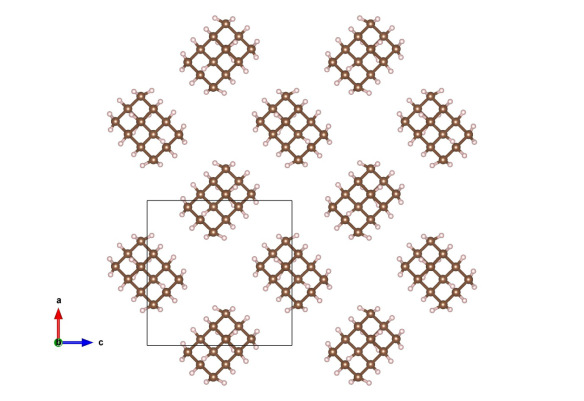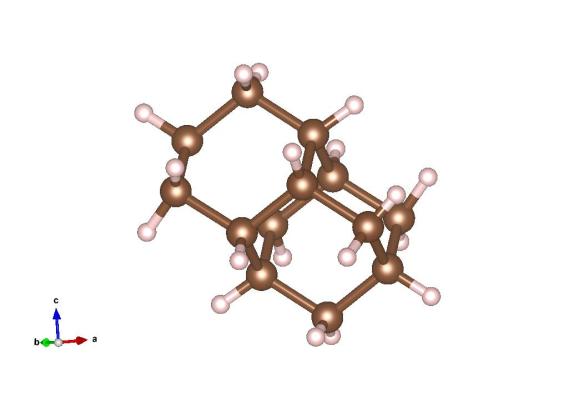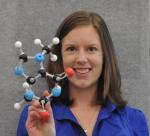Chosen for its looks – Congressane
What does it look like?
Congressane is a cage-type diamondoid hydrocarbon of molecular formula C14H20. After adamantane it is the second diamondoid hydrocarbon, so-called because if these structures were to be repeated ad infinitum they would resemble the structure of diamond. This delightful description was provided by the scientists who first synthesised the molecule:
If adamantane be regarded as an "adamantalogue" of cyclohexane, then [this molecule] is an adamantalogue of adamantane.
"An adamantalogue of adamantane" – trying saying that five times fast!

Some might say the structure bears resemblance to waffles, but this perception may be dependent on whether or not you have eaten breakfast.
What is it?
Congressane first came to the attention of the scientific community when it was used as a logo for the 19th International Congress of Pure and Applied Chemistry held in London in 1963. Somewhat disappointingly and with characteristic lack of whimsy, modern chemists now tend to use either diamantane or the systematic name Pentacyclo[7.3.1.14,12.02,7.06,11]tetradecane when referring to this molecule.
The Congress organisers chose the molecule for the logo thanks to its aesthetically pleasing qualities and symmetrical nature, despite the fact that it had not yet been described in any scientific literature. Attendees of the congress were challenged to complete a synthesis of this molecule, a challenge duly completed by Cupas et al. and reported two years later in the Journal of the American Chemical Society in 1965.
Contributing evidence to the structure were strong mass spectral data revealing a strong, stable molecular ion, and characteristic NMR where the symmetry of the molecule produces only two unique proton environments with nearly identical chemical shifts.
Where did the structure come from?
The X-ray diffraction analysis unequivocally proving the structure was published by Karle and Karle in the same issue of JACS immediately following the communication on the synthetic route from Cupas et al. The congressane crystallised with a cubic unit cell, space group Pa-3, with threefold rotation axes along each body diagonal.







